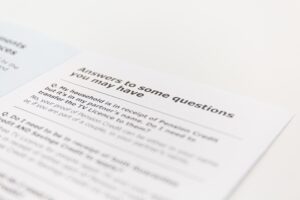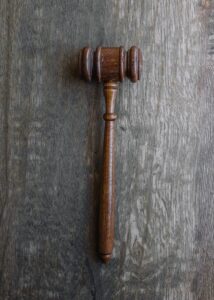Although renters don’t always think about an apartment as a business transaction, a lease is an enforceable contract. Landlords request security deposits to guard against damage that goes beyond normal wear and tear during your time at the property.
When you prepare to move out of an apartment, how you leave will determine the security deposit amount you’ll receive. Although you can always find a landlord who does their best to keep everything, most people only want what will make them whole.
Assuming that there isn’t any damage to the property to repair, these steps can help you save your security deposit.
Step #1: Read the Lease

Your lease will tell you what cleaning and restoration expectations are your responsibility when leaving an apartment. Most rental agreements say that you’ll have the carpets professionally cleaned. If you have hardwood, vinyl, tile, or similar surfaces, they might require a pro to come to disinfect them.
Other items are straightforward fixes that you’ll need to address. Nail holes require patching, any paint updates must get restored, and any other non-authorized changes must be removed to get your security deposit returned.
Step #2: Use Your Documentation

Hopefully, you documented the exact condition of the property when you moved into the apartment. That information will help you get your security deposit back because previous damage cannot be held against you. The initial post-move inspection should be the first chore you complete when moving into a new rental.
When you move out, document the condition of the property using photographs and videos. It helps to include a newspaper with the current date to provide evidence of when these recordings happen.
If you run into a security deposit dispute, the courts may not accept images or videos without date verification.
Step #3: Final Month’s Rent

You might have a landlord ask if you want the security deposit applied to your final month of rental responsibilities. It should not be used for that purpose. If there are restoration expenses that fall to you when moving out, you’d need to pay for those costs out-of-pocket.
Many apartments require you to pay the first and last month when signing the initial lease. It helps to keep a copy available to remember the agreement’s details.
Step #4: Request an Initial Inspection

You can speak with your landlord about having the apartment inspected before you complete the move-out process. This option lets you tour the area to see what potential deductions exist. This step allows you to make repairs before deductions occur, which could be much cheaper if you schedule the work yourself.
Step #5: Know the Law

The Housing Stability and Tenant Protections Act stipulates that landlords must provide itemized statements about any qualifying deductions that provide a basis for holding part or all of the security deposit. If this statement and a return of the funds don’t occur within 14 days, the landlord forfeits any right to retain your security deposit.
That doesn’t mean you’re off the hook for any damage that could be left behind in the apartment. Your landlord would need to take you to small claims court. That’s why it is often better to negotiate a settlement if the damage is in the apartment so that both parties can walk away feeling satisfied.
Step #6: Protect Your Rights

If your security deposit isn’t returned in full and you think it should be, you have options available after moving out of the apartment. Contact your landlord with a written letter stating why the deductions are inappropriate and ask for an immediate refund.
Should your landlord fail to return the requested amount, you can ask that mediation occurs with a neutral third party. Some leases even encourage this action to avoid the cost of going to court.
You also have the option of filing a lawsuit in small claims court. That means you’ll represent yourself and need to face off with the landlord. Even when you may feel justified in getting an amount returned, the time and cost of these proceedings may not make the pursuit worthwhile.
It Is Up to You to Take Action to Get Your Security Deposit Back

The best rule to follow when pursuing your security deposit is never to assume that your landlord is on the up and up. You must document everything about this business arrangement to ensure that you can get your money back.
Landlords have you sign a lease to protect their interests. Documenting the apartment’s condition before and after you leave provides the same benefits for you in this agreement.
If you have a difficult circumstance you’re trying to manage, call 311 in NYC and ask for the Tenant Helpline.








